 Chris Baldwin
Chris Baldwin
Apr 30, 2021
 Chris Baldwin
Chris Baldwin
Apr 30, 2021
This blog is updated June 1, 2021
It’s a good time to be a rapid grocery delivery service. Investment in app-driven, on-demand grocery delivery startups has reached almost $14 billion globally — and the overall grocery market is sized at $1 trillion in the U.S. and over €2 trillion in Europe.1
If you’re new to rapid grocery delivery services, let’s take a step back.
Online grocery shopping surged with COVID-19, and it looks like it’s here to stay. Supermarket News reports e-grocery sales in the U.S. could climb from nearly $35 billion to more than $250 billion by 2025.2
There are a range of players: pure online services like Instacart and Shipt, national brick-and-mortar stores like Walmart and Sainsbury’s, as well as regional supermarkets. Each can have your order delivered in a couple of hours.
But a gang of mostly European disruptors is aiming to outpace traditional players and change the game. These rapid grocery delivery services don’t deliver in hours. They deliver in minutes.
Jiffy, Weezy, and Dija in London; Getir from Istanbul; Gorillas based in Berlin; Glovo from Spain; Cajoo in France; and many others use numerous, localized warehouses (or ‘dark stores’ because they are not open to shoppers), multitudes of pickers and same day courier services, and select inventories to deliver what shoppers need in about 10 minutes.
Their customers could be somebody taking care of an infant; a busy professional hosting a meeting; or somebody who simply needs ingredients for dinner.
If you’re in the rapid grocery delivery game, you know it’s a field crowded with aggressive competitors. To win, you’ll need to provide a better, more personalized customer experience — and do it across the customer journey and through multiple channels. Here are some strategies that can help.
Onboarding
Engagement
Retention
Loyalty
“How do I drive the first five purchases from my app?” It’s a critical question because rapid grocery delivery app users are known for “negative churn.”1 Once they start using an app, they’re likely to stick with it.
One way to get them started is to send a push application with a coupon code one day after they install. With Insider’s AI-backed customer journey orchestrator, Architect, you can orchestrate and personalize this experience based on their browsing behavior. You can also send a personalized email reminder with the same coupon if they don’t respond to the push notification.
For example, suppose the customer is shopping for pasta, and starts browsing dried pasta, ingredients for making fresh pasta, and a variety of sauces and other ingredients.
With Architect, you can send a push notification letting them know about the varieties of dried pasta you have in stock and offer them a coupon for buying three varieties or more. If they don’t respond, you can remind them with an email.
If our pasta person clicks through from the push notification or email, welcome them with a personalized view of your pasta products. It’s also the perfect time to remind them about their coupon, offer price discounts on related items, and recommend new shapes and sauces.
This strategy demonstrates to new shoppers that you understand their preferences, incents the shopper to buy multiple items, and makes it easy to use one app (yours) for all of their pasta preparation needs.
You can also send a WhatsApp to let them know their order is on its way.
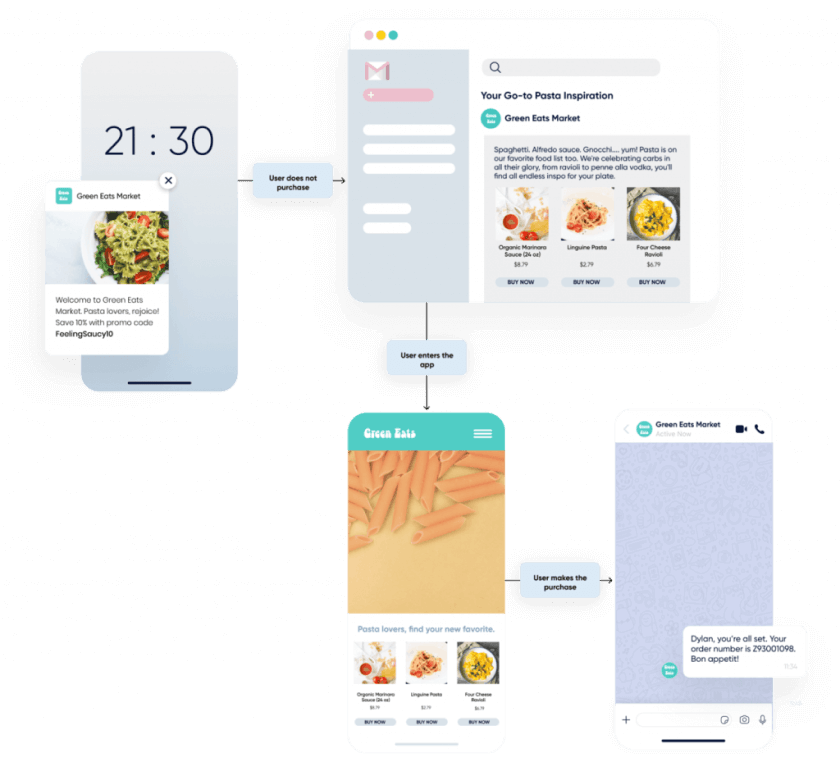
The key to engagement is to be timely with personalized, contextual messages that might involve anything from this weekend’s football matchups to an upcoming outdoor music festival.
You can personalize these massages and push notifications to let customers know about pricing specials, packaged deals, cashback offers, and other relevant promotions. You can even take advantage of user-generated content relevant to customers’ geographic areas.
Let’s say summer will soon be here. It’s the perfect time for cookouts and outdoor festivals. You can send push notifications about picnic-packing for an upcoming music festival — including shots of the crowd and performers from previous events.
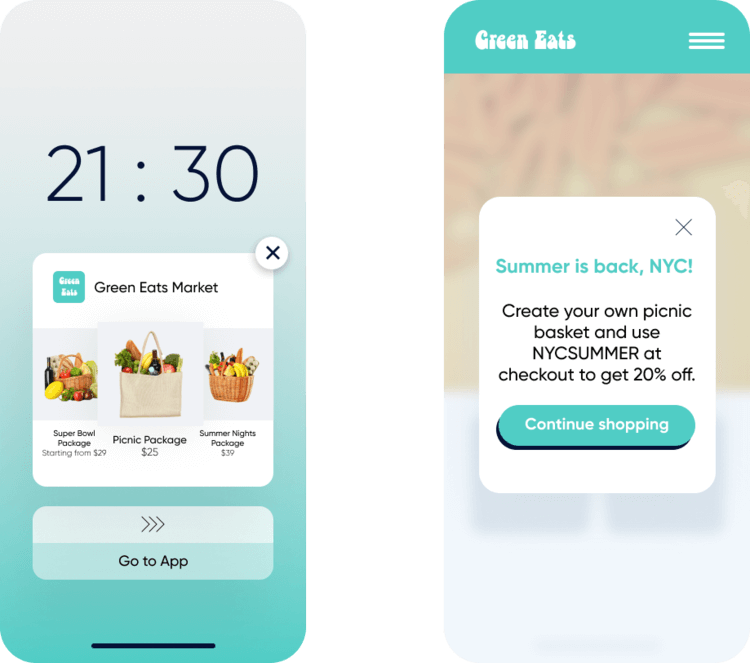
Insider’s in-app templates make it easy for you to present new summer seasonal favorites like heirloom tomatoes, basil, and mozzarella for a quick caprese salad or flank steak along with pre-mixed marinades for the grill.
There are also tools to help tailor your app’s layout to reflect what individual customers have been browsing. This is a great way to significantly boost personalized product discovery.
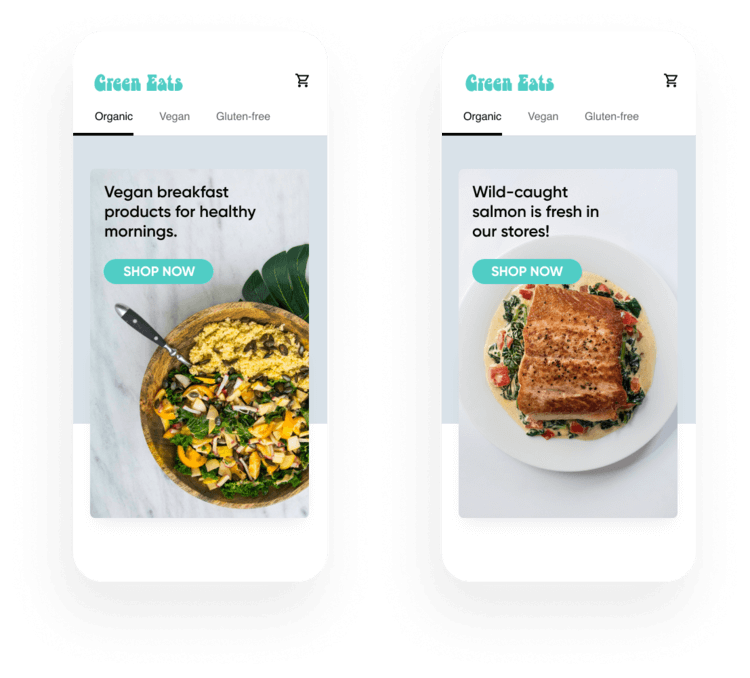
Insider’s AI-powered segmentation and predictive buying capabilities enable you to make recommendations based on which customer is most likely to buy which products or respond to specific offers.
The same techniques can be applied to make recommendations and increase average order value (AOV) as shoppers review what’s in their carts. They have hamburgers and sausages, but what about buns, condiments, and beers and beverages?
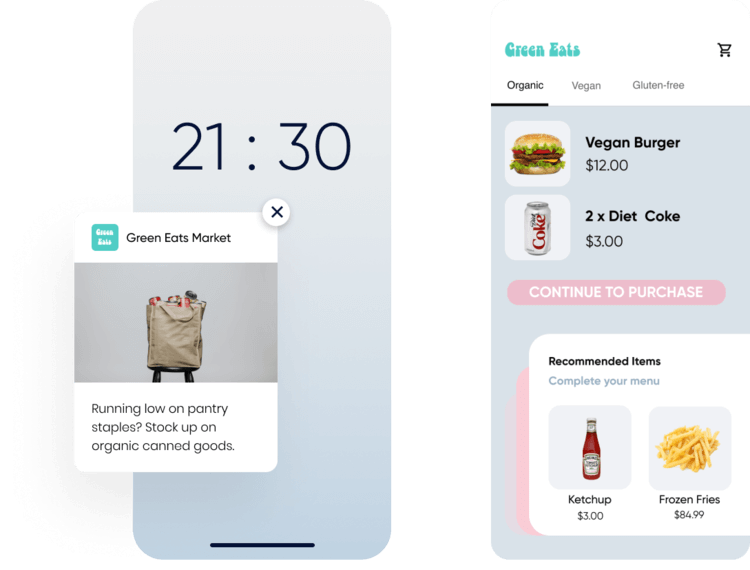
You’ve engaged shoppers by showing them you understand what they like, what they do, and where they live. How do you keep them coming back?
Greater retention can be achieved through a number of tactics:
Tactics like these can be folded into a larger strategy to build greater lifetime value (LTV). For instance, Insider’s tools let you create automated journeys and experiences based on customer behavior. A top-notched strategy- Insider’s RFM analyzes customer value and has been using it since the beginning of the marketing environment. It stands for “Recency”, “Frequency”, and “Monetary”, which are just three metrics that describe what your customers did.
Basically you’ll be able to grasp the answer of the following question automatically;
How often has a customer transacted or interacted with the brand during a particular period of time?
If a shopper tends to order the last week of each month, send push notifications to remind them it’s time to replenish, offer packaged discounts, and help them set up more convenient payment and delivery options. Your app is essentially building their monthly shopping service for them, saving them time, and making your app faster and easier to use.
And if you think that shoppers are losing interest, Insider’s predictive segmenting lets you detect who might delete your app in near time. You can increase the strength of offers or the depth of discounts to make it harder to leave.
Supermarket News reports “shoppers are highly satisfied and loyal to their preferred grocery store.” But they also say that “loyalty does not extend to the online channel.”2
There is a real opportunity for on-demand grocery services to build brand loyalty. The strategy is to identify high-value or VIP shoppers, take special care of them, and reward them for their business.
With Insider’s predictive segmenting you can identify these shoppers and then create personalized journeys to make shopping easier, more fun, and more rewarding.
For example, if one of your VIP shoppers is a vegetarian, you can create app layouts with updates on the freshest produce deliveries or the arrival of a special cheese. Use personalized overlays on the homepage that feature these items and appeal to their gourmet vegetarian tastes.
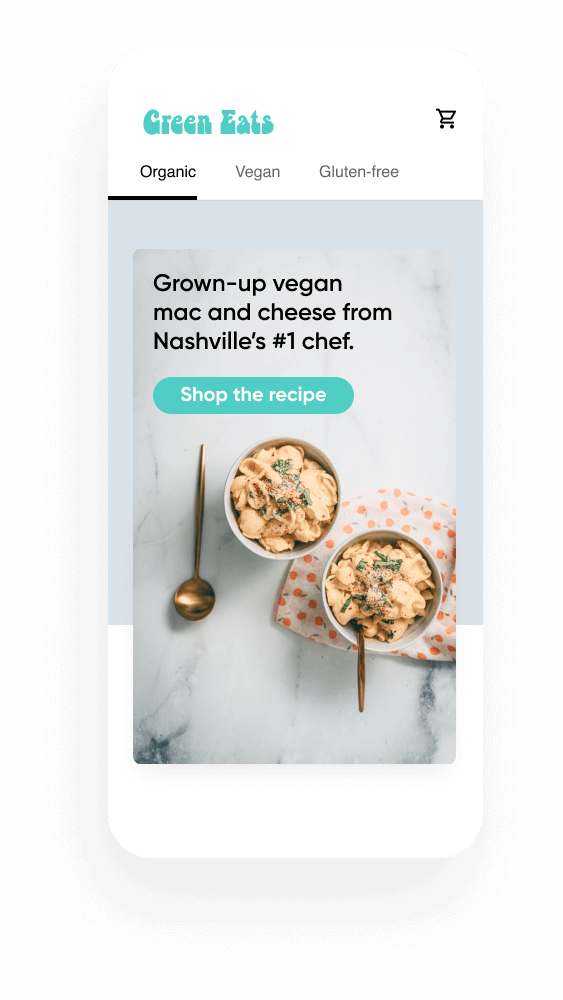
You can also develop after-purchase journeys with Insider’s customer journey orchestrator technology.
Send a WhatsApp to let your VIP vegetarian know their order is on its way. Use the opportunity to tell them they’ve earned 200 loyalty points. If the points go unclaimed, send a follow-up app push that adds 100 more points. If still unclaimed, use email to remind them and show them some of the great products they can get for their hard-earned 300 points. Maybe some wine to go with that artisanal cheese.
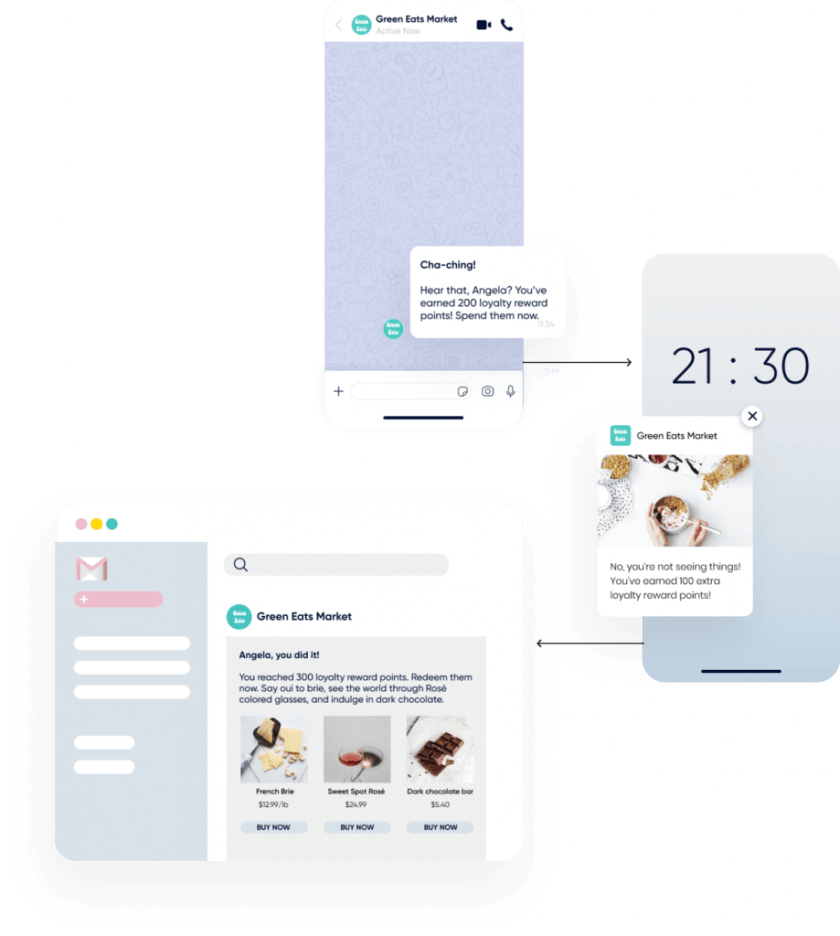
We all know there is no such thing as truly “negative churn.” If shoppers delete your app, Insider tools can help you identify them and let you run campaigns on ad channels to bring them back.
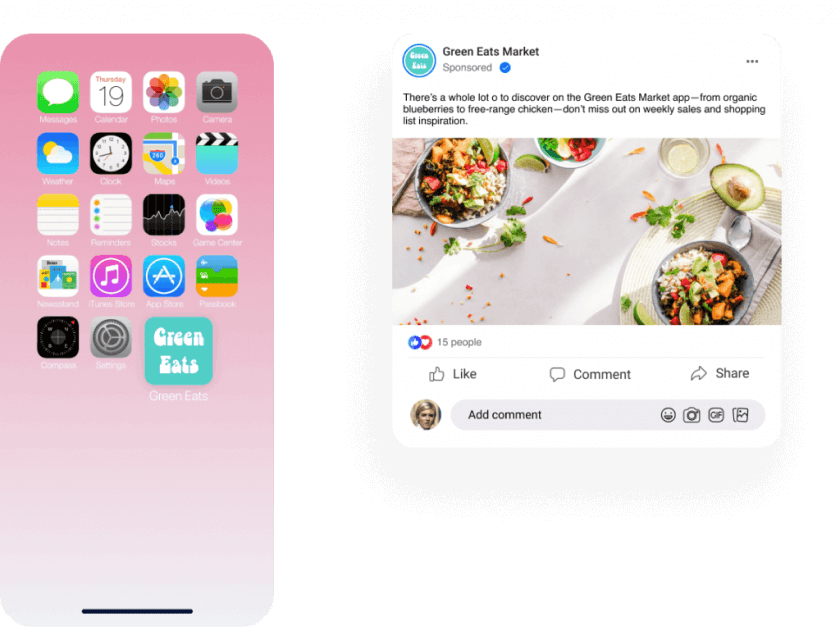
The arrival and ascendance of rapid grocery delivery services signals a change in online grocery shopping behavior and how e-grocers are configured and operate. The ability to deliver predictive, individualized experiences through multi-channel orchestration may be the real game changer for startups disrupting the e-grocery game.

Written by
Chris Baldwin
Chris is an award-winning marketing leader with more than 12 years experience in the marketing and customer experience space. As VP of Marketing, Brand and Communications, Chris is responsible for Insider's brand strategy, and overseeing the global marketing team. Fun fact: Chris recently attended a clay-making workshop to make his own coffee cup…let's just say that he shouldn't give up the day job just yet.